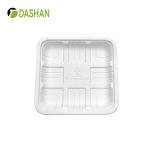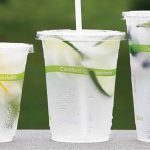Quick Summary:
CPET food containers are premium packaging solutions combining durability, thermal versatility, and recyclability. Ideal for bakeries, catering, frozen meals, and retail, CPET food containers protect food, maintain presentation quality, and support sustainable practices. Customizable sizes, compartments, and lids make CPET food containers versatile for commercial and home use.
Introduction
The food packaging industry increasingly relies on CPET food containers for ready-to-eat meals, bakery items, and frozen foods. These containers protect the product, maintain quality during storage, and enhance visual appeal.
Unlike PET, PP, or paper-based packaging, CPET food containers offer oven-to-freezer compatibility, durability, and recyclability, making them a preferred choice for modern foodservice, retail, and catering businesses.
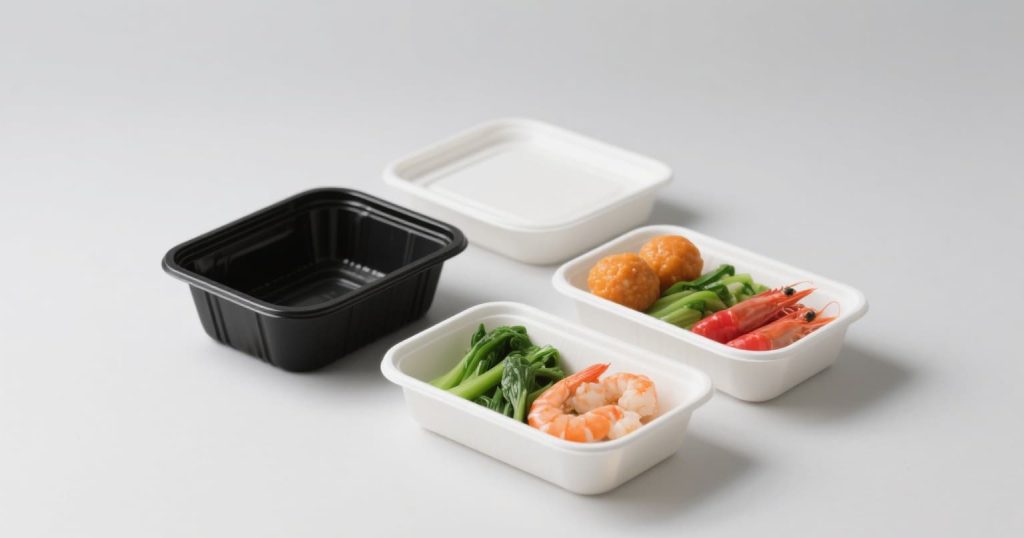
What are CPET Food Containers?
CPET food containers are made from Crystallized Polyethylene Terephthalate, which undergoes a heat-induced crystallization process to enhance thermal and mechanical properties.
Key features of CPET food containers:
-
Oven-safe up to 220°C (428°F)
-
Freezer-safe down to -40°C (-40°F)
-
Durable and resistant to bending or cracking
-
Recyclable via PET recycling streams
-
Premium glossy appearance for retail presentation
CPET food containers are suitable for a wide variety of applications, from bakery displays to frozen meals and home meal prep.
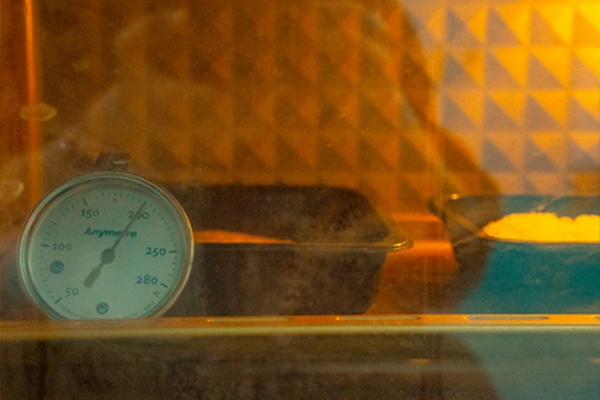
Deep Dive into CPET Material – Chemical Structure, Crystallization Process, Thermal Properties, and Comparison with Other Polymers
Chemical Structure
The semi-crystalline structure of CPET food containers provides:
-
High thermal stability
-
Mechanical strength
-
Chemical resistance for acidic or oily foods
This makes CPET food containers superior to amorphous PET, which is flexible but heat-sensitive.
Crystallization Process
-
Extrusion and shaping
-
Heat treatment above the glass transition point
-
Rapid cooling to lock in semi-crystalline structure
The process ensures that CPET food containers are durable and maintain structural integrity in both ovens and freezers.
Thermal Properties
-
Oven-safe up to 220°C
-
Freezer-safe down to -40°C
-
Microwave-safe
-
Resistant to thermal cycling
These properties make CPET food containers ideal for ready-to-eat meals, baked goods, and frozen desserts.
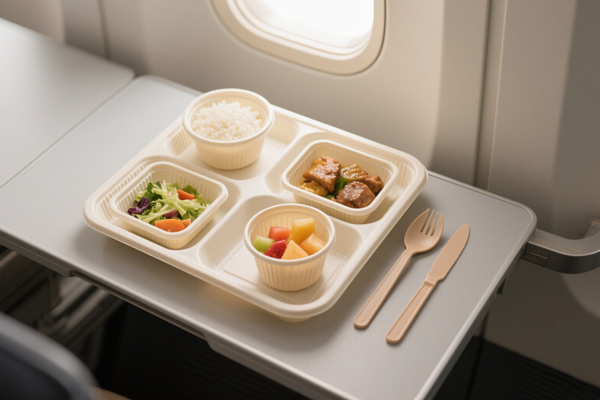
Comparison with Other Polymers
| Property | CPET Food Containers | PET | PP | PLA / Bioplastics |
|---|---|---|---|---|
| Oven-safe | ✅ 220°C | ❌ | ❌ | ❌ |
| Freezer-safe | ✅ -40°C | ✅ -20°C | ✅ -20°C | ❌ |
| Durability | High | Medium | Medium | Low |
| Chemical Resistance | High | Medium | Medium | Low |
| Recyclable | ✅ | ✅ | ✅ | ❌ / Limited |
| Transparency / Glossy | Glossy, premium | Transparent | Matte | Opaque |
| Microwave-safe | ✅ | ✅ | ✅ | ❌ |
| Thermal Cycling | ✅ | ❌ | ❌ | ❌ |
CPET food containers outperform PET, PP, and PLA by combining thermal versatility, durability, recyclability, and premium aesthetics.
Advantages of CPET Food Containers
-
High thermal versatility (oven-to-freezer)
-
Durability and structural integrity
-
Premium presentation with glossy finish
-
Recyclable material
-
Customizable sizes, compartments, and lids
-
Microwave-safe for reheating
-
Reusable potential
Using CPET food containers enhances food protection, convenience, and sustainability.
Applications of CPET Food Containers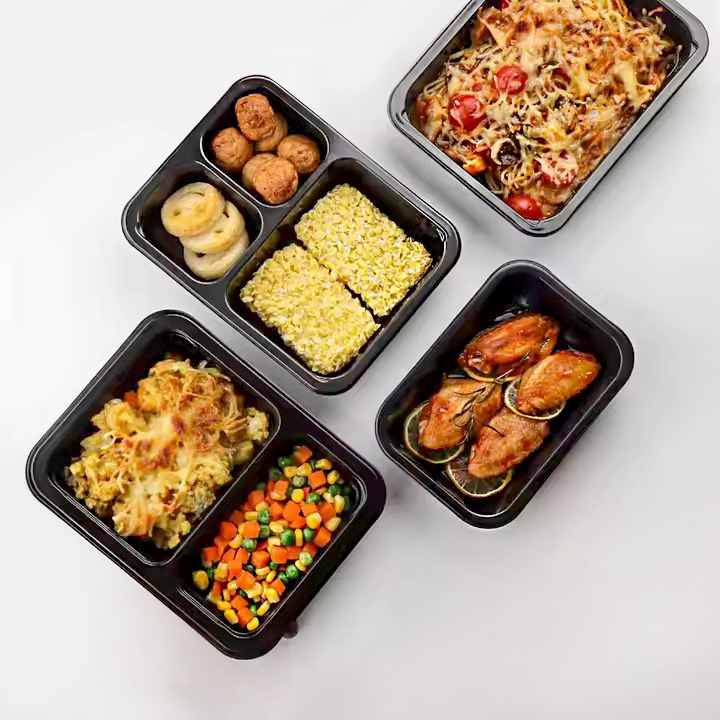
-
Bakeries & Confectioneries – For cupcakes, mini cakes, and pastries.
-
Catering & Events – Pre-portioned meals with stackable designs.
-
Retail & Supermarkets – Ready-to-eat meals and frozen foods.
-
Meal Prep & Delivery Services – Safe for freezing and reheating.
-
Home Use – Durable, portion-controlled, and easy to clean.
Across these applications, CPET food containers maintain food quality and presentation.
Comparison with Other Packaging Materials
| Feature | CPET Food Containers | PET | PP | Paper/Cardboard |
|---|---|---|---|---|
| Oven-safe | ✅ | ❌ | ❌ | ❌ |
| Freezer-safe | ✅ | ✅ | ✅ | ❌ |
| Durability | High | Medium | Medium | Low |
| Recyclable | ✅ | ✅ | ✅ | ✅ |
| Visual appeal | Glossy | Glossy | Matte | Matte |
| Product separation | Excellent | Good | Good | Poor |
| Microwave-safe | ✅ | ✅ | ✅ | ❌ |
CPET food containers outperform alternatives in oven-to-freezer safety, durability, presentation, and recyclability.
Real-World Case Studies
Bakery Chains in Europe
-
Reduced tray deformation by 90% using CPET food containers
-
Improved dessert presentation
-
Eco-friendly branding
Frozen Meal Producers in North America
-
Oven-ready meals could move directly from freezer to oven in CPET food containers
-
Stackable design optimized storage
-
Reduced product returns
Meal Delivery Services
-
Portion-controlled CPET food containers prevented food mixing
-
Microwave-safe for reheating
-
Reusable and sustainable
Thermal Testing Data
| Test Type | Temperature Range | Observation |
|---|---|---|
| Oven Heating | 180–220°C | CPET food containers maintain shape |
| Freezer Storage | -20 to -40°C | Rigid, no structural compromise |
| Microwave Reheating | 600–1000W | Safe to reheat meals |
| Thermal Cycling (Freezer → Oven) | -40°C to 220°C | No deformation |
Lifecycle and Sustainability
CPET food containers:
-
Compatible with PET recycling streams
-
Lightweight yet durable to reduce material use
-
Reusable for multiple meals
-
More environmentally responsible than PLA or paper-based alternatives
FAQs About CPET Food Containers
-
Are CPET food containers microwave safe? – Yes.
-
Can CPET food containers go in ovens? – Yes, up to 220°C.
-
Are CPET food containers freezer safe? – Yes, down to -40°C.
-
Are CPET food containers recyclable? – Yes, via PET streams.
-
Can CPET food containers be reused? – Yes.
-
How do CPET food containers compare to PLA? – More durable, oven-safe, recyclable.
-
Can CPET food containers hold sticky or oily foods? – Yes.
-
Are CPET food containers customizable? – Yes, sizes, compartments, colors, lids.
Tips for Using CPET Food Containers
-
Avoid direct flames
-
Clean promptly to prevent staining
-
Stack carefully
-
Use snap-on lids for freshness
Conclusion
CPET food containers are a premium choice for bakeries, catering, retail, frozen meals, and home use. They combine durability, oven-to-freezer versatility, recyclability, and premium aesthetics. Using CPET food containers ensures:
-
Enhanced food protection and presentation
-
Reduced product damage
-
Sustainable, eco-friendly packaging
For businesses and consumers, CPET food containers offer functional, aesthetic, and sustainable solutions for modern food packaging.
References
-
Plastics Technology – CPET Properties and Applications
https://www.ptonline.com/articles/cpet-properties-and-applications -
Smithers Pira – Food Packaging Trends
https://www.smithers.com/services/market-reports/packaging/food-packaging-trends -
EPA – Sustainable Packaging Guidelines
https://www.epa.gov/smm/sustainable-management-materials-packaging -
Food Packaging Forum – Materials and Safety
https://www.foodpackagingforum.org/food-packaging-materials -
European Bakery & Confectionery Market Report
https://www.euromonitor.com/bakery-and-confectionery


